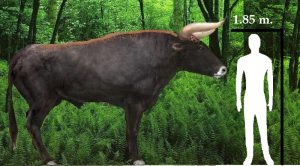Monthly Archives: September 2014
Correction: Salamander Spelling
On the zoology practice test 1 answer sheet, the correct species name is Ensatina eschscholzii, and the subspecies is eschscholzii as well. My apologies for the spelling mistake.
Zoology Test Up!!!
Hi 240, the Zoology Practice Test 1 and its answer key are online! It can be fond under either Documents or 240 Documents. It should get pretty difficult, but that’s the point. You’d be ready for anything ( I hope) ! This was based off of his Lecture outlines. Good Luck, and let me know if you have questions! -The SI
No SI today, 9/18/14
Hi everyone. Unfortunately, I woke up to the lovely realization that I have transportation issues to contend with! Hooray! What I’ve always dreamed of, of course. I will be unable to make it to Napa today. Sorry everyone. I certain the Zoology SI will go on fine, if you choose to do so. Also, I have a feeling that the General Biology class won’t have a dire SI need today considering you guys just took your test. I will be back next week, and everything else will go as scheduled. Remember, 120 SI is every Tuesday and Thursday 4:00-5:30, and 240 is every Thursday 1:30-3:30. Sorry everyone.
Corrections to 120 SI, 9/4/14
Hello everyone! I realize that in the last 120 SI I made an erroneous statement concerning alpha and beta linkages in polysaccharides. It turns out I corrected myself incorrectly, and my original definition was right. The correct manner of their linkage, Alpha or beta, is whether they are all facing the same direction (alpha) or if alternating glucose molecules face different directions (beta). It is NOT due to inherent structural differences in the glucose. My sincerest apologies.
Organism of the Day: Aurochs!
Behold, the Aurochs (Bos primigenius)!
Daww, it’s so small and cute!
It’s…a cow. I know. BUT! It is not just any mere cow. For lo, it is the ancestor to all domestic cattle. These were organisms not to be trifled with. The Aurochs is a creature that shared the land with humans in Europe and Asia for may thousands of years. It was a large beast, and yet largely swift and agile. That, matched with it’s fiery temper, made for a terrifyingly deadly combination. It makes one wonder why our ancestors decided to try to domesticate these things at all! The Aurochs were spread far and wide, and had 3 distinct subspecies, shown here with their distributions.
The Aurochs was a forest dwelling bovine, with a diet that consisted of grass and leaves from trees. They played a pivotal role in the ecosystem of many of Europe’s forests, acting as the top-teir herbivores. Their absence has led to the forests falling out of balance, an issue that’s still being delt with today. So, how long has our species known these animals? Here’s a hint:
And you thought hammer pants were ancient.
The bulls on all the cave paintings we’ve found, like this one from Lascaux, France from 17,000 years ago, are all aurochs. They certainly do have a lot of meat on them, and were probably very enticing for our ancestors. Probably less enticing was their ability to hunt you down without tiring if you pissed them off. How do we know so much about this extinct species? Well, they haven’t been long gone. The last Aurochs died in Poland in the 1600’s. There’s plenty of historical data about them. When he wasn’t busy bringing down the wrath of Mars on the Gauls, even Julius Caesar wrote about them,
…those animals which are called uri. These are a little below the elephant in size, and of the appearance, color, and shape of a bull. Their strength and speed are extraordinary; they spare neither man nor wild beast which they have espied. These the Germans take with much pains in pits and kill them. The young men harden themselves with this exercise, and practice themselves in this sort of hunting, and those who have slain the greatest number of them, having produced the horns in public, to serve as evidence, receive great praise. But not even when taken very young can they be rendered familiar to men and tamed.
-Gallic War
Here’s an example of an extremely lucky man from the middle ages.
And a less fortunate Aurochs
So, why bring these creatures up? Because we’re bringing them back. The forests of Europe quite simply aren’t the same with out them, in a similar way Yellowstone National Park wasn’t the same without its keystone species, wolves. Beech trees are over-running the forests without the massive bovines. The TaurOs and Uruz Projects are using selective breeding to bring back a breed of cattle that can replace the aurochs and be very genetically similar. And they’re getting closer.
Note: I do not own these images.
Zoology SI!!
Hey Everyone! So, after greatly impressing the Professors with my Komodo Dragon-Wrangling Skills, stopping a rampaging elephant with naught but my soothing voice, and successfully disguising myself to observe unnoticed the ever vigilant sponges, I have been permitted to become the Zoology SI! This website will soon support materials for members of Bio 240, as well as for members of Bio 120. I will make practice tests and quizzes for Zoology, and be here to answer any questions you may have. Zoo, this site is yours now too. Let this be a space truly for the love of Bio (and good grades. But who cares about those?)! For ALL students, if you ask a question, I will respond in 24 hours or less. And to all interested in Biology, whether in these classes or not, I hope this helps. I’m rooting for you guys!
-The SI
P.S. Psssst, Botany, you guys can come too.




